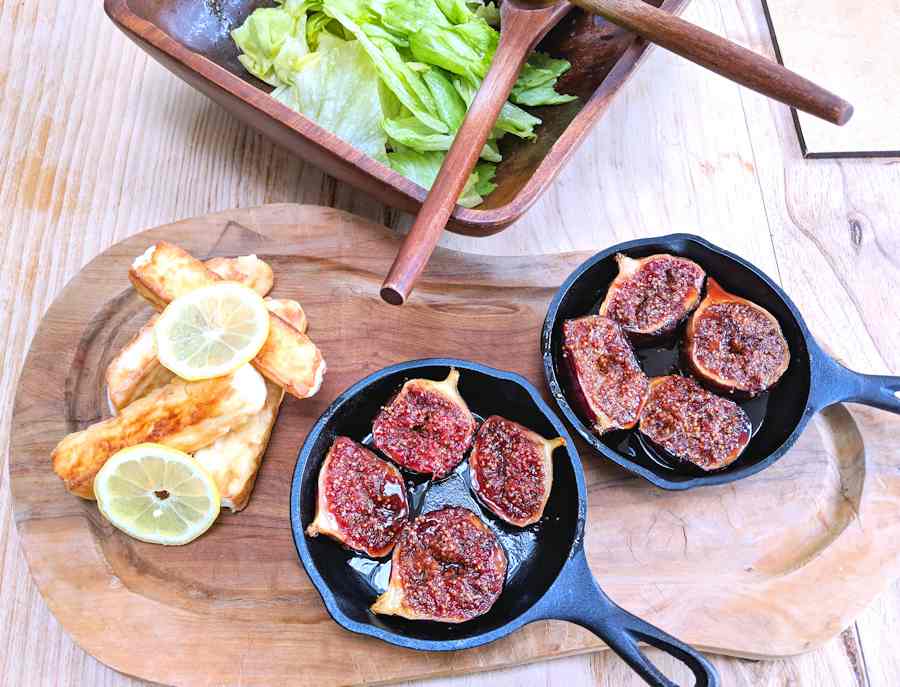
Greek saganaki is very much like Polish pierogi: it’s an all-encompassing, almost generic term which nevertheless means something precisely specific to the person who brings the subject of the dish up. Pierogis can hide virtually any filling inside the pasta-like casing: meat or veg, sweet and savoury, cheese or vegan. Possibly excluding fish but hell, you never know what the millennial blogsters are up to these days. Me, I’m old-fashioned, with an expat’s nostalgia journeying to my childhood Christmases in my mind, to mushroom-cabbage stuffing. The shortage of choucroute or wild ceps in the UK intensifies my yearnings.

Saganaki turns out to be a dish derived from its container, a little like tapas: it’s anything cooked and served in a tiny skillet, small sagani. It’s NOT a type of cheese as I long mistakenly thought. A number of things can be saganaki-ed including vegetables and sausages, but my Greek friend like a lot of her compatriots always means fried cheese when she talks about it.
To my surprise, it needn’t be haloumi (which is Cypriot anyway so wrong to think of it in a Greek dish on many levels) or anything melty and squidgy. Very often feta is given the treatment of rinsing under cold tap, dredging in flour and slapping into a – tiny or not – hot skillet. It is surprisingly nice even though it doesn’t melt; clearly Greeks are more open minded about fried cheese than me, who takes oozing for granted.
If you use feta or manouri, which is a bit like firm ricotta, the effect is refreshingly different: crumbly instead of oozy, crisp on the outside, delicious with a squeeze of lemon and offset by a sweet companion. I made it with caramelised figs which ended up served in my little saganaki dishes, instead of the cheese. May Zeus forgive me.